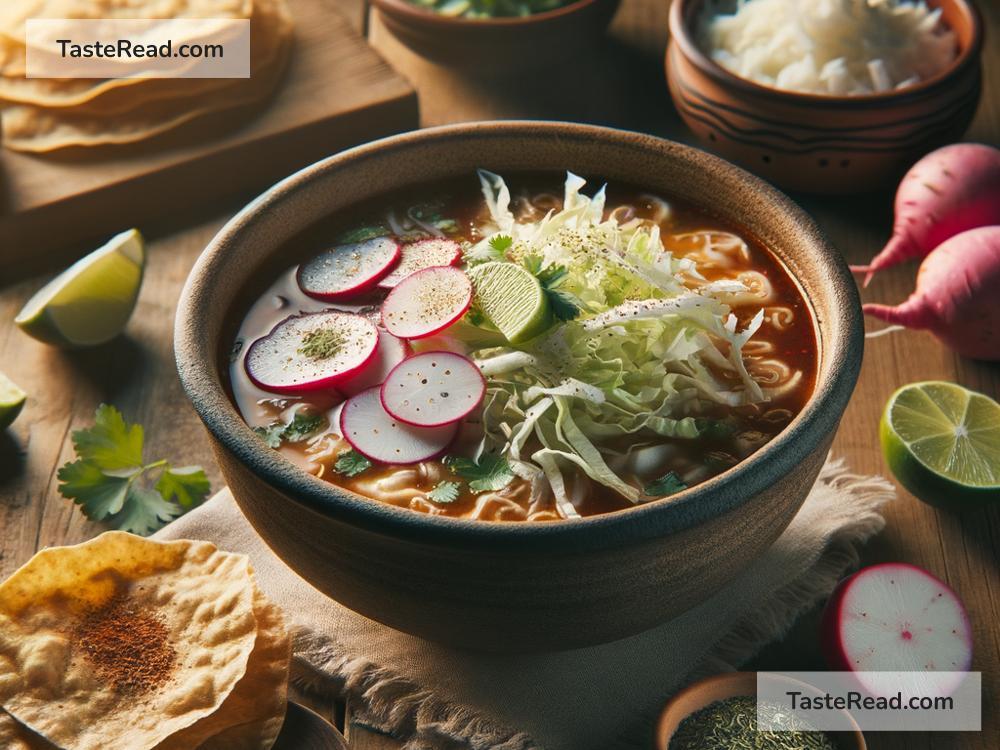The Story of Mexican Pozole: A Delicious Dish With a Fascinating History
Pozole is one of Mexico’s most beloved and traditional dishes. This hearty soup made with hominy, meat, and flavorful toppings has been enjoyed for centuries. But behind its mouthwatering taste lies a rich history that stretches back to the time of the Aztecs. Let’s take a journey through the past to learn more about this iconic dish and why it continues to be a favorite in Mexican homes and celebrations.
What Is Pozole?
Pozole (pronounced poh-ZOH-leh) is a warm, comforting soup or stew made with large kernels of corn called hominy, which is dried corn that has been treated to remove the hull. The dish usually includes pork or chicken, although some variations use other meats. Pozole is also known for its toppings, which add flavor, texture, and brightness. Popular choices include shredded lettuce or cabbage, radishes, lime, salsa, avocado, and oregano.
Pozole comes in different colors: green, white, and red, depending on the ingredients used. For example, red pozole gets its color from dried chili peppers, while green pozole is flavored with green tomatillos, cilantro, and other herbs.
This versatile dish is served on special occasions, family gatherings, and holidays, such as Christmas and Mexican Independence Day. But its story and importance go far beyond the dinner table.
The Pre-Columbian Origins of Pozole
Pozole has roots that go back hundreds of years to ancient Mexico, long before the arrival of Europeans. The Aztecs, an indigenous people known for their advanced civilization, valued corn not just for its nutritional importance but also for its role in religion and mythology. Corn was seen as a sacred crop, and it played a key role in ceremonies and rituals.
The earliest version of pozole was far different from what we know today. Historical records suggest that the Aztecs made pozole for ritual offerings and large feasts. However, the story takes a twist: it is believed that in some Aztec rituals, pozole was made using human meat. Sacrifices were part of Aztec religion, and the stew was offered to honor the gods. After ceremonies, members of the community may have eaten the dish as part of these sacred rituals. While this practice sounds shocking today, it illustrates how food and culture can be closely tied.
The Evolution of Pozole
When the Spanish arrived in Mexico in the 16th century, everything changed. The Spanish brought their customs, religion, and food traditions, which influenced the way Mexicans ate and prepared food. Christianity replaced the Aztec religion, and instead of human sacrifices, animals like pigs became the main source of meat.
Pork, which had been introduced by the Spanish, began to replace human meat in pozole recipes. Over time, the dish evolved into a meal for everyday families rather than a ritual offering. New spices and ingredients introduced by the Spanish, like garlic and onions, added more flavor to the dish.
For centuries, pozole remained a staple in Mexican cuisine. Regional variations emerged, as cooks in different parts of the country adapted the dish to suit their ingredients and tastes. Today, each type of pozole—from the spicy red version to the herby green one—reflects the diversity of Mexican culinary traditions.
Pozole in Modern Mexico
Pozole has gone from ritual food to a dish that brings people together. It is especially popular during celebrations and special events. Independence Day in Mexico, celebrated on September 16, is one of the most popular times to enjoy pozole. Families and friends gather to honor Mexico’s culture and history, and pozole is often served alongside other traditional dishes like tacos, tamales, and mole.
Pozole is also a comforting meal during cold days or festive nights, and it has become a symbol of Mexican warmth, hospitality, and community. The dish’s preparation also reflects its deep cultural significance. Making pozole often requires hours of cooking and preparation, as the hominy must be softened and flavored, and the broth simmered to perfection. It’s not just food; it’s an experience that brings loved ones together in the kitchen and at the table.
How Pozole Brings People Together
One of the best things about pozole is how customizable it is. The toppings allow everyone to tailor their bowl to their liking. Some people love a squeeze of lime for added brightness, while others pile on shredded cabbage or spicy salsa. This element of personalization adds a layer of fun during gatherings.
Pozole is also a dish that invites storytelling. Many families pass down their pozole recipes from generation to generation, adding their own twists and secrets along the way. Every bowl of pozole is a connection to the past—a reminder of Mexico’s history and the enduring importance of food in celebrating community.
Conclusion
Pozole isn’t just a meal; it’s a reflection of Mexico’s rich and complex culture, history, and traditions. From its roots in Aztec rituals to its place in modern festivities, pozole has transformed through time yet remains a symbol of togetherness and warmth.
Next time you enjoy a steaming bowl of pozole, remember that you are not just eating a delicious soup—you’re tasting history. Whether you’re celebrating Mexico’s Independence Day or simply sharing a meal with friends, pozole is a dish that continues to bring people together, one flavorful spoonful at a time.


